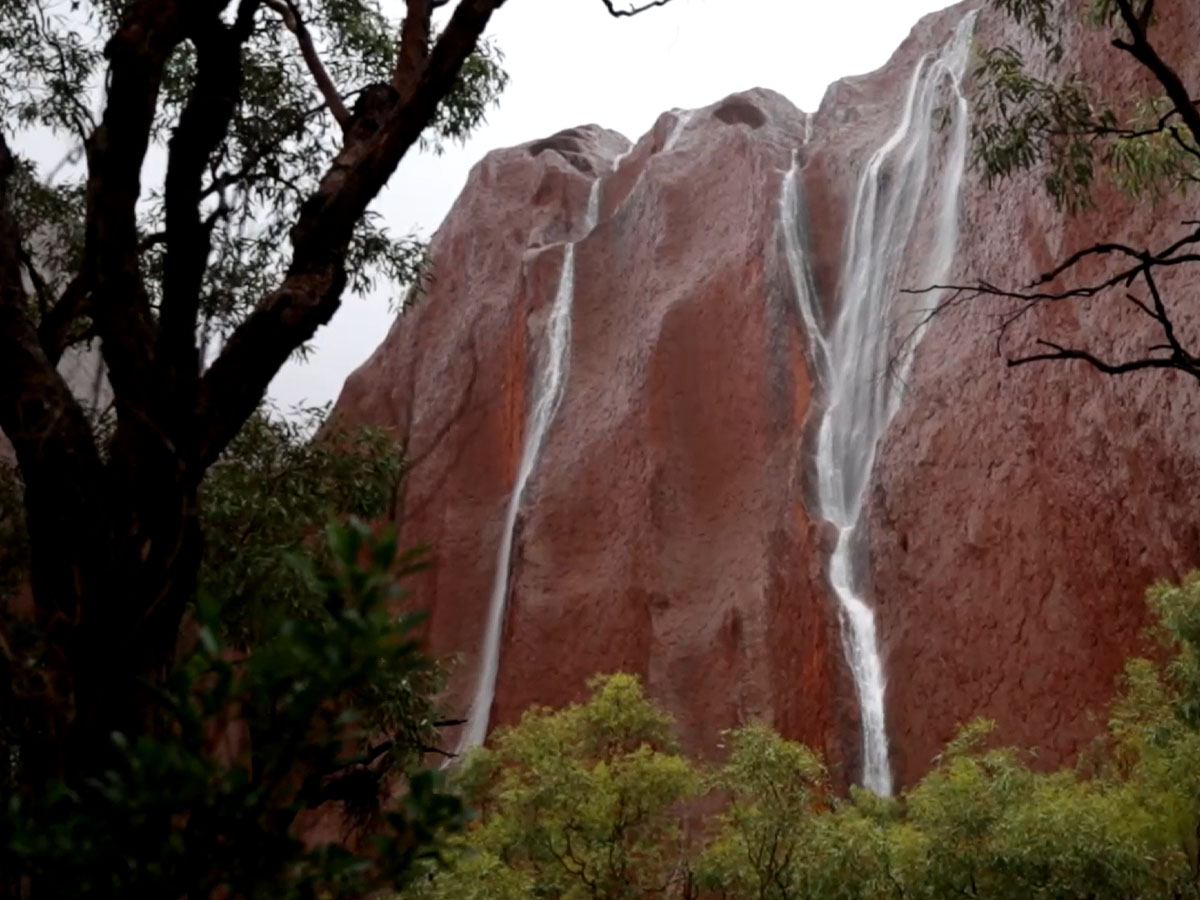15 April 2025
![]() 2 mins Read
2 mins Read

Most of us envision Uluṟu beneath a beaming sun and cloudless blue sky. But occasionally, the rain clouds move in and quench the desert with a much-needed shower. And on the rare occasion that the rainfall is super heavy, onlookers are treated to awe-inspiring scenes of waterfalls cascading down the face of Uluṟu.
This week, Uluṟu was drenched with more that 20mm of rain in 24 hours, due to Cyclone Dianne moving across the NT towards Queensland. The deluge caused multiple waterfalls to thunder down the side of Uluṟu, bringing the rock to life and refilling the waterholes around its base.

Uluṟu comes alive with waterfalls during a deluge. (Image: Tourism NT)
For the Anangu Traditional Custodians of Uluṟu, kapi (water) is an important and sacred resource. The rain is a powerful and transformative event that replenishes the waterholes and nourishes the land. Around Uluṟu, there are only a few permanent water sources, such as Muṯitjulu waterhole. And after a storm, these waterholes are at their most breathtaking – making it the perfect time to visit.

Muṯitjulu Waterhole is replenished by the rain cascading down. (Image: Tourism NT)
Uluṟu generally experiences the most rainfall in the summer between November and January. However, it’s difficult to predict when it will rain, especially in high enough volumes to cause waterfalls. To see Uluṟu at its most beautiful, you need a little bit of luck, and to be in the right place at the right time.

Witnessing waterfalls on Uluṟu involves a bit of lucky timing. (Image: Tourism NT)
LEAVE YOUR COMMENT